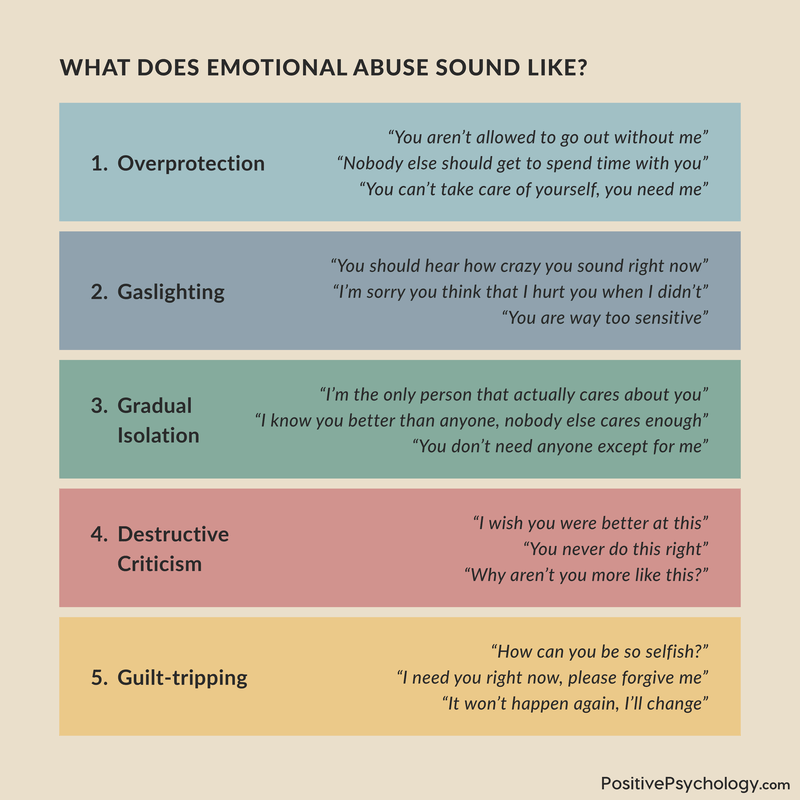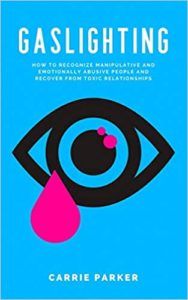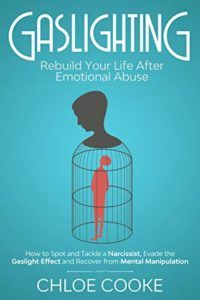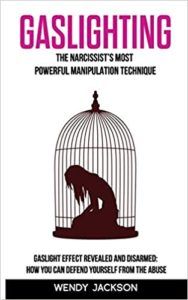What Is Gaslighting? 20 Techniques to Stop Emotional Abuse
 Gaslighting is emotional manipulation that leaves its victims confused and despondent as they question their sanity.
Gaslighting is emotional manipulation that leaves its victims confused and despondent as they question their sanity.
This article will shed light on the gaslighting phenomenon, its consequences, and what to do about it.
Ultimately, by exposing gaslighting tactics and equipping victims with valuable knowledge and resources, victims will be empowered with the tools to break free from the abuse of gaslighting.
Before you continue, we thought you might like to download our three Positive Communication Exercises (PDF) for free. These science-based tools will help you and those you work with build better social skills and better connect with others.
This Article Contains:
- What Is Gaslighting? A Psychologist Explains
- Emotional Abuse Example
- 20 Techniques to Stop Gaslighting
- Gaslighting in Relationships
- Is There Gaslighting in the Workplace?
- Gaslighting Children: What Does It Look Like?
- 25 Questions to Ask to Know if You Are Being Gaslighted
- The Long-Term Effects of Gaslighting
- 7 Quotes About Gaslighting
- Five Books on the Topic
- Helpful PositivePsychology.com Resources
- A Take-Home Message
- References
What Is Gaslighting? A Psychologist Explains
Gaslighting is a malicious power tactic in which “the gaslighter tries (consciously or not) to induce in someone the sense that her reactions, perceptions, memories, and beliefs are not just mistaken, but utterly without grounds—paradigmatically, so unfounded as to qualify as crazy” (Abramson, 2014, p. 2).
In the famous film Gaslight, this phenomenon is portrayed by a couple played by Ingrid Bergman and Charles Boyer. Boyer plays the role of the gaslighter as he manipulates his wife’s reality through a series of deceptive acts (e.g., hiding precious jewels, accusing her of stealing them, and then secretly placing them in her purse).
One of his most notable strategies is to dim and brighten the gaslights while telling his wife the change in light is all in her head. Boyer also isolates his wife by warning friends of her mental instability. Boyer’s gaslighting tactics go on over a period of time, until his wife becomes increasingly confused to the point of feeling insane.
Gaslighting is a control tactic that leaves its victim in a fog of altered reality in which they question their own perceptions and memories. By creating chaos, gaslighters hold all the power in the relationship as their victims become increasingly oppressed. They often use triangulation, which involves speaking through other people rather than directly, and splitting, which involves driving a wedge between people (Sarkis, 2018).
Manipulative gaslighting is further described as an act of sidestepping evidence supporting the victim’s testimony and labeling the victim as psychologically or cognitively impaired (Stark, 2019).
To this end, gaslighters typically use statements such as “You’re too sensitive”; “You’re nuts”; “Lighten up”; “You need help”; and “I was only kidding.”
Gaslighting techniques are often grounded in social inequalities in which stereotypes are employed as a way to attack specific vulnerabilities (Sweet, 2019). For example, a gaslighting husband might criticize his wife for being too emotional when she becomes upset by his manipulations and too weak to handle his gender-focused jokes.
While there is some disagreement as to whether gaslighting abuse is more common among males, gaslighting practices are frequently reported among men and women.
Emotional Abuse Example

Chuck and Maria began dating after high school. Maria was immediately smitten with Chuck, who was funny and charming – often the life of the party. When Maria become pregnant, Chuck reluctantly agreed to get married.
As a South American immigrant, Maria found herself confused about language – often unable to translate some of Chuck’s nasty comments, like when he referred to her as a ‘conniving gold digger.’ Chuck frequently made biting comments toward Maria but generally dismissed them as jokes.
As Maria’s pregnancy became more evident, Chuck’s resentment of her grew. Maria’s pregnancy was not an easy one; she was always tired and suffered from terrible nausea. Whenever Chuck found Maria resting, he referred to her as ‘weak’ and ‘pathetic.’ He also made racist comments, saying, ‘You’re lazy, just like the rest of you people.’
However, at other times, Chuck seemed happy about the new baby and even doted on Maria, which left her thoroughly confused. Once the baby was born, Chuck was annoyed by the constant crying and blamed Maria, saying she had ‘no mothering instincts whatsoever.’ He frequently referred to her as ‘ignorant’ and ‘too mentally unbalanced’ to even care for a tiny baby.
The colicky baby, combined with Chuck’s berating, left Maria feeling increasingly on edge, often apologizing to Chuck when the baby cried. During the first year of the baby’s life, Chuck’s behavior alternated between calm and detached, and angry and aggressive.
Maria never knew which version of Chuck she would be getting, adding to her intense anxiety. Chuck could see that Maria was nervous and told her she was a ‘nut job’ and needed to buck up.
Telling her she was too much of a lunatic to handle money, Chuck began limiting Maria’s access to it. When Maria’s family or friends wanted to visit, Chuck told them that Maria’s behavior was mentally unstable and that it was best to let her rest. When they called, he never gave Maria the phone or allowed them to leave a message.
Sometimes Chuck pushed Maria or squeezed his hand tightly around her throat. Occasionally, he would make meager attempts at apologies for his violent behavior, such as ‘I’m sorry you made me do that.’
Chuck repeatedly told Maria that she was an unfit mother and that he would be calling Child Protective Services or even the immigration office if she didn’t get it together. Maria was terrified of being sent back to her country of origin, where she had escaped extreme poverty and violence. And the thought of losing her baby in a custody battle was more than Maria could handle.
After a year of marriage, Maria had become socially isolated and dependent on Chuck for everything. She generally felt stupid and inadequate, wondering what was wrong with her. Lonely, depressed, and anxious, Maria found herself in a haze of confusion – unable to recognize the confident, outgoing, and joyful person she once was.
20 Techniques to Stop Gaslighting
Fortunately for both gaslighting victims and the practitioners who treat them, there are several effective steps for stopping gaslighting behaviors and bringing relief to sufferers.
Here are 20 such techniques.
As a victim
- Recognize the warning signs. Gaslighting is not an overnight occurrence. Instead, perpetrators repeatedly trick, deceive, and manipulate to wear down victims over time. The insidious nature of gaslighting generally leaves victims feeling lost and confused without noticing the steps that got them there. However, there are definite signs that may indicate early gaslighting tactics. Here are several examples:
- Attempts are made to turn others against you
- You are repeatedly being lied to
- You are criticized as being crazy, sensitive, weak, stupid, or inept
- You are being isolated from friends and family
- Your attempts at communicating your concerns never go anywhere
- Listen to your gut. If you feel that something isn’t right in your relationship, don’t ignore your intuition.
- Don’t be ashamed. As gaslighters are master manipulators, anyone may be drawn into their tactics, regardless of intelligence.
- Don’t second guess your feelings and intellect. If you feel a certain way or believe something to be true, don’t allow someone to discredit you.
- Check in with others. As you are being drawn into the gaslighter’s manipulative process, the insight of others will help you see the reality of the situation.
- Don’t merely accept the gaslighter’s assertions regarding your mental or emotional wellness.
- Don’t retaliate. Gaslighters rarely back down and will typically seek revenge if retaliated against (Sarkis, 2018).
- Try not to react. If you can avoid acting afraid or upset, do so. Just like all bullies, gaslighters are reinforced by their ability to get under your skin.
- Get help from a therapist.
- Reduce exposure to the gaslighter and, whenever possible, GET OUT of the relationship as fast as you can.
As a practitioner
There are various tools for practitioners dealing with gaslighting situations. For example, Dr. Robin Stern (2018), who is a psychoanalyst and expert in treating gaslighting victims, describes many useful steps such as:
- Help the client differentiate truth from distortion. This may be aided with the use of journaling.
- Teach the client how to use mental exercises and positive visualization as a way to reframe their mindset. For example, the client might visualize what life would be like without the relationship.
- Use relaxation techniques to help the client deal with anxiety.
- Teach the client that ending an abusive gaslighting relationship is okay.
- Determine if there is a power struggle occurring between the client and another individual.
- Help the client to accept and track their feelings as a way of identifying triggers.
- Help the client to identify friends and confidants who will help as sources of emotional support.
- Teach the client to focus on their feelings rather than who is right or wrong.
- Help the client to accept that they cannot control how others feel.
- Teach the client self-care and self-compassion techniques.
As an important side note, mental health practitioners must be mindful of the labels used to describe clients. Labels that serve to pathologize the client represent another aspect of gaslighting detrimental to the psychotherapeutic process (Tormoen, 2019).
Instead of using deficit-laden labels, practitioners can identify and focus on the client’s strengths to avoid gaslighting.
How to spot the hidden signs someone is gaslighting – MedCircle
Gaslighting in Relationships
Because gaslighting is fueled by the intimacy between the abuser and victim, it often occurs within close relationships (Stern, 2018).
Abusers may be any gender, and gaslighting may also take place within any relationship. Gaslighting, which victims have described as ‘crazy-making,’ is especially damaging within power-laden relationships (Sweet, 2019).
For example, if one member of a couple is the primary income earner, they hold power over the money, which may be used as a coercive control tactic. Gaslighting is a type of narcissistic abuse in which the perpetrator often lacks empathy and has high levels of entitlement and antisocial attributes (Arabi, 2019).
In relationships, gaslighters deceive their partners into believing that they are the source of problems as they go about criticizing, belittling, and abusing their partner with no accountability for their faults (Arabi, 2019).
Gaslighting is a long process that works in stages. For example, at the beginning of a relationship, the victim may only notice that something uncomfortable is happening within the relationship but may be unclear as to precisely what it is.
Over time, the victim becomes increasingly confused, worn down, and emotionally exhausted by the abuser’s manipulation, indifference, berating, and intimidation. This process feeds off of itself; as the gaslighting tactics weaken the victim’s defenses, they become more vulnerable and helpless against continued abuse.
Relationships are ripe for gaslighting effects because one of the most effective tools in gaslighting is love (e.g., opinions hold more weight when held by those believed to love us; Abramson, 2014). Interestingly, coercive gaslighting interactions are more common the longer couples are together (Blázquez Alonso, Moreno Manso, & García-Baamonde Sánchez, 2012).
Is There Gaslighting in the Workplace?

Within the workplace, gaslighting is believed to rely on external reinforcement to be effective (Adkins, 2019).
For example, an individual who makes their coworker feel unskilled and mentally off may do so to appear competent in the eyes of the supervisor. Sarkis (2018) describes some workplace gaslighting behaviors such as:
- Stealing credit for another’s work
- Throwing coworkers under the bus
- Pitting coworkers against each other
- Giving undeserved negative reviews
- Harassing or intimidating coworkers
- Making up stories to get coworkers fired
- Threatening lawsuits
Like in other contexts, gaslighting in the workplace results in various problems for victims, such as anxiety, exhaustion, powerlessness, and the doubting of their perceptions.
Ultimately, narcissistic workplace behaviors such as those noted above are highly detrimental, often leaving victims apprehensive about going to work each day, feeling alienated from others, experiencing immune system weakness, unhappy and dissatisfied at work, and experiencing high rates of work absences (Germain, 2018).
As workplace gaslighting has the potential to cause a high level of damage at both an individual and organizational level, both employers and staff need to recognize warning signs and take action as soon as possible.
In her book Gaslighting: Recognize Manipulative and Emotionally Abusive People—and Break Free, Sarkis (2018) provides readers with information to help identify workplace gaslighting behaviors, as well as the tools to no longer be subjected to its negative ramifications.
Gaslighting Children: What Does It Look Like?

Many of the ways in which parents gaslight their kids are consistent with tactics used toward adults, such as ridicule; making them feel inadequate, worthless, or unloved; and convincing them that they are not normal.
Drawn from articles by McCleod (2018) and Sarkis (2018), below are 17 examples of how child gaslighting and coercive control by parents may appear:
- Within dysfunctional or abusive households, children may be blamed for the chaos.
- Violence against other members of the family may be used as a way to manipulate the child.
- Children may be restricted from social activities or isolated from friends as a way of exercising control while denying opportunities for supportive relationships.
- Unrealistic homework and chore expectations may be used as a way of controlling children’s time and participation in positive activities.
- Parents may create resentment and tension between siblings by pitting them against each other such as by assigning one child with a positive label and the other child with one that is degrading. Phrases such as “Why can’t you be more like your brother?” also enhance resentment.
- Excessive parental supervision and monitoring (perhaps with the use of spyware) may be used to demean the child’s privacy and sense of autonomy.
- Children may be prohibited from expressing their feelings or opinions.
- Children may be deprived of social services such as counseling.
- Children may be forbidden from having friends in the home, thereby precluding others from seeing what’s going on in the family.
- Parents may micromanage children’s schoolwork, perhaps destroying it and making them start over.
- Children may be deprived of essential resources such as certain foods or technology.
- Parents may make fun of children or engage in destructive teasing.
- Parents may enforce excessive rules.
- Parents may show a lack of regard for children’s developmental periods.
- Parents may control movement within the home.
- Parents may demand respect from children without reciprocating it.
- Parents may habitually break promises.
The above dysfunctional parenting practices are common ways for gaslighters to enhance their manipulative control over children. Additionally, parental alienation, in which one parent turns a child against the other (often following divorce) as a way of punishing the other parent (Sarkis, 2018), is another type of parental gaslighting that is exceptionally hurtful to children.
Importantly, along with being highly detrimental to kids, gaslighting behaviors are frequently passed down to the next generation. Children raised by gaslighters will often apply these same tactics in their own relationships, a behavior that is referred to by Sarkis (2018) as ‘fleas,’ meaning ‘lie down with dogs, and you will end up with fleas.’
It is thus imperative to break the cycle of gaslighting behavior before it extends its destructive grasp toward more potential victims.
When speaking about domestic abuse, what first comes to mind is physical or sexual abuse. Research, resources, and helplines focus primarily on these forms of abuse.
Consequently, emotional abuse is often neglected and minimized, as it does not cause physical harm, despite it being the most prevalent form of abuse in intimate relationships. More specifically, between 50-80% of adults experience emotional abuse in intimate relationships (Nesenoff, 2020).
Emotional abuse is defined as “nonphysical behavior that belittles another person by using insults, threats, or other tactics to make the victim feel threatened, inferior, or degraded” (Koza, 2017).
This form of abuse is often difficult to detect as it can be under the radar and easier excused than physical abuse.
These are a few types of emotional abuse:
- Overprotection: when your partner acts unnecessarily possessive and feels threatened by other people in your life, ultimately leading to aggression and obsession.
- Gaslighting: when your partner makes you feel you are crazy and invalidates everything you say.
- Gradual isolation: when your partner intentionally isolates you from other people in your life.
- Destructive criticism: when your partner insults you and makes negative comments about everything you do.
- Guilt-tripping: when your partner makes you feel like you did something wrong in order to gain your sympathy.

25 Questions to Ask to Know if You Are Being Gaslighted
If you find yourself feeling like something isn’t quite right within a personal, family, or work relationship and you’re wondering about potential gaslighting, here are 25 questions to consider:
- Do you no longer recognize the person you’ve become?
- Do you feel like you can’t do anything right?
- Do you feel trapped or powerless in your relationship?
- Do you feel foggy and confused?
- Do you often second-guess yourself?
- Do you feel alone?
- Do you find yourself constantly taking the blame?
- Does the potential gaslighter frequently boast about themselves?
- Is the potential gaslighter a frequent liar?
- Does the potential gaslighter demand respect they do not give?
- Do you worry about being too sensitive?
- Do you feel anxious when around the gaslighter?
- Do you apologize often?
- Do you find that your feelings or thoughts are often minimized?
- Do you feel that others are turning against you?
- Do you feel like you are losing your self-confidence?
- Do you frequently experience indecisiveness?
- Do you find yourself doubting your memory or perceptions?
- Do you feel more stressed and less joyful than you used to?
- Do you find yourself making excuses for the potential gaslighter?
- Does the potential gaslighter often break promises?
- Do you feel stupid, incompetent, or as if you’re losing your mind?
- Do you feel intimidated by the potential gaslighter?
- Do you often wonder what’s wrong with you?
- Does the potential gaslighter only make conditional apologies (e.g., “I’m sorry for saying that, but it’s your fault”)?
The Long-Term Effects of Gaslighting

Over time, however, things gradually changed. As your partner made fun of your parenting skills, ridiculed your ability to do simple things around the house, and questioned your memory, you eventually started to wonder if something was seriously wrong with you.
When you mentioned feeling hurt by such comments, your partner would laugh and tell you to “grow up.” And when your children were pulled into the manipulations, you also saw your relationships with them deteriorating.
This insidious and cruel behavior sneaks up on a person but ultimately results in serious long-term issues. For example, the victim described above is likely to experience low self-confidence in their ability as a partner and parent, low self-esteem, lack of joy in life, loneliness, and isolation.
The consequences of the chronic stress of gaslighting might also result in health problems and reduced work performance. Clearly, gaslighting is no joke; it erodes multiple facets of psychosocial health, often leaving its victims with major depression, anxiety disorders, and even suicidality (Sarkis, 2018).
7 Quotes About Gaslighting
Various sayings highlight the coercive nature of gaslighting; here are seven examples:
Gaslighting provides malignant narcissists with a portal to erase the reality of their victims without a trace. It is a method that enables them to commit covert psychological murder with clean hands.
Shahida Arabi
Gaslighting is implanted narratives cloaked in secrecy.
Tracy Malone
Driving someone to insanity is the devil’s work.
E. A. Bucchianeri
Remember, someone that does something bad to you, will always try to control the narrative, and they generally get out there first and spin the story to anyone who will listen. I always like to watch the quiet one. You are not alone.
Maranda Pleasant
Sometimes you have to choose between being lonely and being crazy.
Anonymous
Some people will label you as vindictive, unforgiving or even evil for not allowing them to hurt you, yet again.
Wayne Gerard Trotman
When you broke out in anger and lashed out at me, for a moment I believed that there was something wrong with me. Luckily enough, well before the belief turned into self hatred, it dawned upon me that your anger was a reflection of your own messed up self. And just then I knew, I was fine. I was alright but not with you.
K. C. Nagashree
Five Books on the Topic
Several books are designed to help readers determine if gaslighting exists and how best to deal with it.
Here are five examples:
1. The Gaslight Effect: How to Spot and Survive the Hidden Manipulation Others Use to Control Your Life

Dr. Robin Stern (2018)
This book helps individuals spot the signs of gaslighting, ultimately ‘gasproofing’ their lives, and break off gaslighting relationships.
Available on Amazon.
2. Gaslighting: How to Recognize Manipulative and Emotionally Abusive People and Recover from Toxic Relationships

Carrie Parker (2020)
By describing gaslighting relationships and tactics, this book helps readers spot gaslighting behaviors across various types of relationships.
Readers are also provided with the tools needed to steer clear of gaslighters.
Available on Amazon.
3. Gaslighting: Rebuild Your Life After Emotional Abuse: How to Spot and Tackle a Narcissist, Evade the Gaslight Effect, and Recover from Mental Manipulation

Chloe Cooke (2020)
This book helps readers identify the often subtle ways in which gaslighting manipulation may leave individuals questioning their realities.
Information and resources are included that elucidate the dangers of gaslighting and help victims take control of their lives.
Available on Amazon.
4. Gaslighting: How to Recognize & Avoid the Hidden Manipulation That Toxic People, Sociopaths & Narcissists Use to Control Your Life. Free Yourself From the Narcissistic Ex Abuse and Gaslight Effect

Melody Dyer (2020)
This book assists readers in recognizing the emotional abuse of narcissistic gaslighting practices.
Included in the book is an overview of what is involved in gaslighting, why gaslighting is a favorite tool of narcissists, and how to avoid or disarm gaslighting.
Available on Amazon.
5. Gaslighting: The Narcissist’s Most Powerful Manipulation Technique. Gaslight Effect Revealed and Disarmed: How You Can Defend Yourself From the Abuse

Wendy Jackson (2020)
Describing gaslighting as a highly effective manipulation technique, this book helps readers identify gaslighting tactics, abusive personality disorders, and pathological narcissism, as well as how to defend against and recover from gaslighting victimization.
Available on Amazon.
Helpful PositivePsychology.com Resources
There are various resources available at PositivePsychology.com that may help individuals identify areas where their relationships may be inadequate or damaging, as well as ways to enhance feelings of self-love and self-acceptance.
- Our article about Self-Love with Exercises and Worksheets is a comprehensive resource containing numerous activities, worksheets, and tools aimed at enhancing self-love and experiencing a more meaningful and joyful life. The article is particularly relevant for anyone in the process of recovering from an abusive relationship.
- In the article How to Build Self-Acceptance, readers learn a great deal about how to practice unconditional self-acceptance and self-compassion. Along with helping readers better understand self-acceptance, the article contains numerous valuable resources such as tips for building self-acceptance, ways to teach self-acceptance, exercises for students, and popular books.
If you’re looking for more science-based ways to help others communicate better, this collection contains 17 validated positive communication tools for practitioners. Use them to help others improve their communication skills and form deeper and more positive relationships.
A Take-Home Message
Gaslighting is a narcissistic control tactic that wreaks havoc on various types of relationships, including those between romantic partners, parents and children, and coworkers. Anyone may be affected by this insidious technique – victimization is not a sign of weakness or naiveté.
The short- and long-term consequences of gaslighting are immense, often leaving its victims profoundly depressed and unable to cope with daily life. This article describes gaslighting behavior across various contexts, identifies red flags, and suggests ways to stop gaslighting and recover from its effects.
By providing this information, the hope is that victims will learn that they are not alone and deserve to be liberated from the sinister grasp of gaslighting.
We hope you enjoyed reading this article. Don’t forget to download our three Positive Communication Exercises (PDF) for free.
- Abramson, K. (2014). Turning up the lights on gaslighting. Philosophical Perspectives, 281, 1–30.
- Adkins, K. (2019). Gaslighting by crowd. Health, Well-Being, and Society, 35, 75–87.
- Anonymous (n.d.). Retrieved on August 7, 2020, from https://www.goodreads.com
- Arabi, S. (2019). 50 shades of gaslighting: Disturbing signs an abuser is twisting your reality. Retrieved on August 9, 2020, from https://www.culteducation.com/group/798-abusive-controlling-relationships/34794-50-shades-of-gaslighting-disturbing-signs-an-abuser-is-twisting-your-reality.html
- Blázquez Alonso, M., Moreno Manso, J. M., & García-Baamonde Sánchez, M. E. (2012). Indicators of psychological abuse associated with the length of relationships between couples. Annals of Psychology, 28(3), 772–779.
- Bucchianeri, E. A. (n.d.). Retrieved on August 7, 2020, from https://www.goodreads.com
- Cooke, C. (2020). Gaslighting: Rebuild your life after emotional abuse: How to spot and tackle a narcissist, evade the gaslight effect, and recover from mental manipulation. Amazon Digital Services LLC – KDP Print US.
- Dyer, M. (2020). Gaslighting: How to recognize & avoid the hidden manipulation that toxic people, sociopaths & narcissists use to control your life. Free yourself from the narcissistic ex abuse and gaslight effect. Independently Published.
- Germain, M. L. (2018). Considerations for HR, consultants, and organizational psychologists. In M. L. Germain, Narcissism at work. Palgrave Macmillan, Cham.
- Jackson, W. (2020). Gaslighting: The narcissist’s most powerful manipulation technique. Gaslight effect revealed and disarmed: How you can defend yourself from the abuse. Independently Published.
- Malone, T. (n.d.). Retrieved on August 8, 2020, from https://www.goodreads.com
- McCleod, D. (2018). Coercive control: Impacts on children and young people in the family environment. Retrieved on August 9, 2020, from https://www.basw.co.uk/system/files/resources/CoercivecontrolImpactsonchildrenlitreview.pdf
- Nagashree, K. C. (n.d.). Retrieved on August 9, 2020, from https://www.yourquote.in
- Parker, C. (2020). Gaslighting: How to recognize manipulative and emotionally abusive people and recover from toxic relationships. Amazon Digital Services LLC – KDP Print US.
- Pleasant, M. (n.d.). Retrieved on August 9, 2020, from https://www.goodreads.com
- Sarkis, S. (2018). Gaslighting: Recognize manipulative and emotionally abusive people—and break free. New York, NY: Da Capo Press.
- Stark, C. (2019). Gaslighting, misogyny, and psychological oppression. The Monist, 1022, 221–235.
- Stern, R. (2018). The gaslight effect: How to spot and survive the hidden manipulation others use to control your life. New York, NY: Harmony Books.
- Sweet, P. (2019). The sociology of gaslighting. American Sociological Review, 1–25.
- Tormoen, M. (2019). Gaslighting: How pathological labels can harm psychotherapy clients. Journal of Humanistic Psychology, 1–19.
- Trotman, W. G. (n.d.). Retrieved on August 7, 2020, from https://www.goodreads.com
Let us know your thoughts
Read other articles by their category
- Body & Brain (49)
- Coaching & Application (57)
- Compassion (26)
- Counseling (51)
- Emotional Intelligence (24)
- Gratitude (18)
- Grief & Bereavement (21)
- Happiness & SWB (40)
- Meaning & Values (26)
- Meditation (20)
- Mindfulness (45)
- Motivation & Goals (45)
- Optimism & Mindset (34)
- Positive CBT (28)
- Positive Communication (20)
- Positive Education (47)
- Positive Emotions (32)
- Positive Leadership (18)
- Positive Parenting (4)
- Positive Psychology (33)
- Positive Workplace (37)
- Productivity (16)
- Relationships (46)
- Resilience & Coping (36)
- Self Awareness (21)
- Self Esteem (37)
- Strengths & Virtues (31)
- Stress & Burnout Prevention (34)
- Theory & Books (46)
- Therapy Exercises (37)
- Types of Therapy (64)










What our readers think
Thanks for sharing the information on this topic. I can recognise some of these behaviours when seeking for self need.